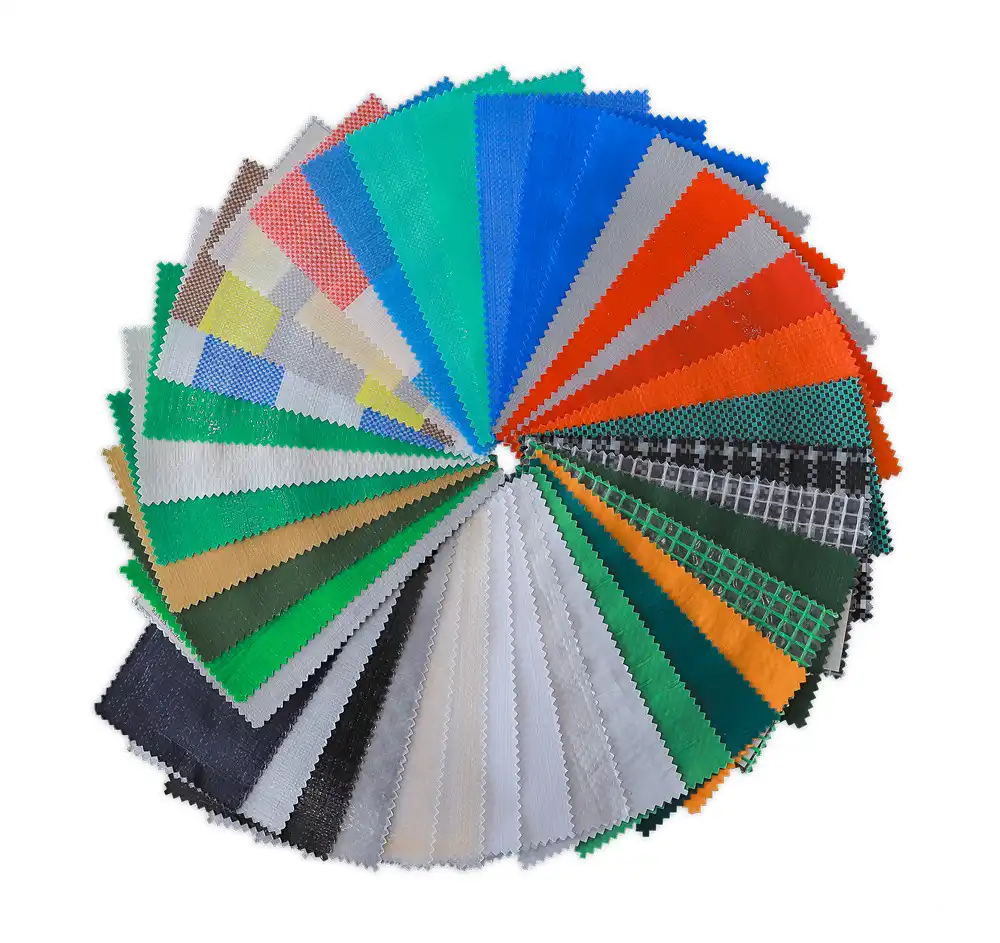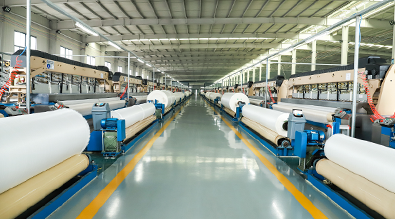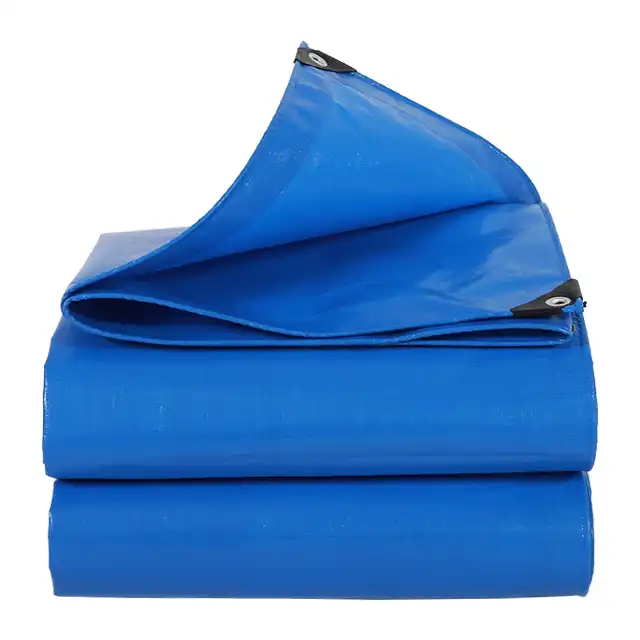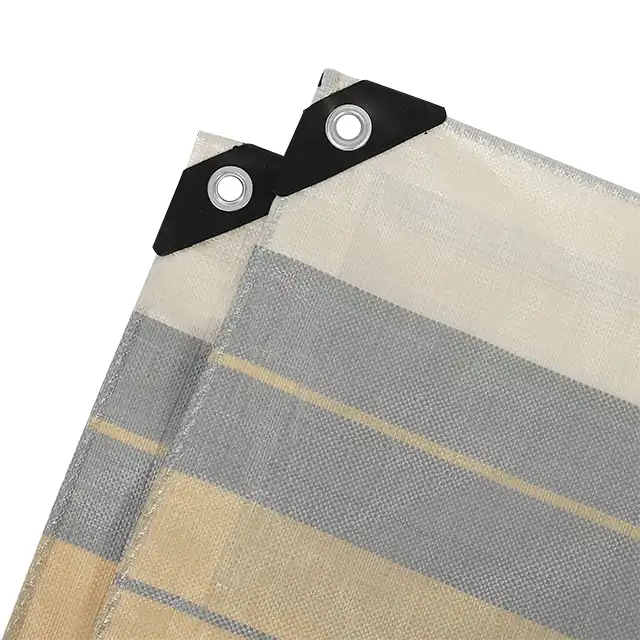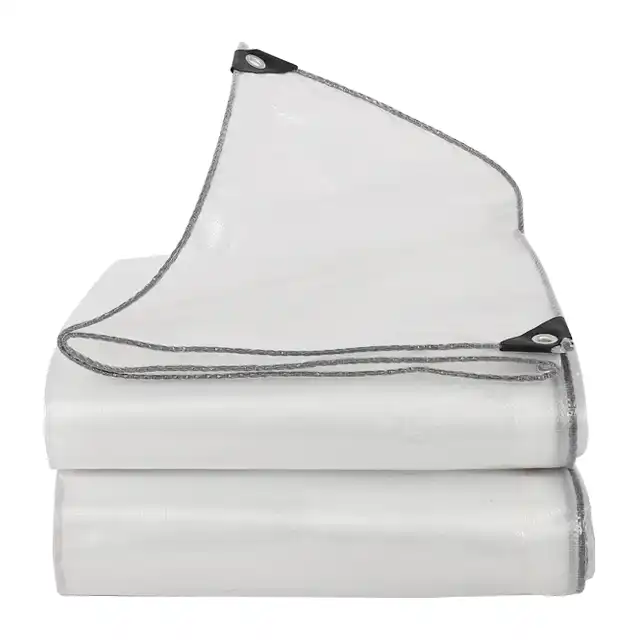Reduce Product Loss During Transport with Heavy-duty Tarpaulin Covers
Transportation represents one of the most critical phases in the supply chain, where products face numerous environmental challenges that can result in significant financial losses. Weather exposure, moisture infiltration, UV radiation, and physical damage during transit collectively contribute to billions of dollars in product deterioration annually across various industries. Heavy-duty tarpaulin covers emerge as an essential protective solution, offering comprehensive defense against these destructive elements while maintaining cost-effectiveness for businesses of all sizes. The implementation of high-quality tarpaulin sheet protection systems has proven instrumental in preserving product integrity, reducing insurance claims, and ensuring customer satisfaction throughout the transportation process.
Understanding Transport-Related Product Damage and Prevention Strategies
Environmental Factors That Threaten Product Integrity During Transit
 The journey from manufacturer to end consumer exposes products to a complex array of environmental hazards that can compromise their quality and marketability. Weather conditions represent the primary threat, with rain, snow, and humidity capable of penetrating inadequate protective barriers and causing irreversible damage to sensitive materials. Temperature fluctuations during long-distance transport create condensation problems that affect electronics, textiles, and food products, while extreme heat can warp plastics and degrade chemical compositions. Wind-driven debris, dust, and airborne contaminants pose additional risks, particularly for products with exposed surfaces or packaging vulnerabilities. UV radiation from prolonged sun exposure causes fading, brittleness, and material degradation in items ranging from furniture to automotive components. A premium tarpaulin sheet manufactured with UV-resistant polyethylene fibers provides comprehensive protection against these environmental challenges, incorporating specialized additives that maintain material integrity even under extreme conditions.
The journey from manufacturer to end consumer exposes products to a complex array of environmental hazards that can compromise their quality and marketability. Weather conditions represent the primary threat, with rain, snow, and humidity capable of penetrating inadequate protective barriers and causing irreversible damage to sensitive materials. Temperature fluctuations during long-distance transport create condensation problems that affect electronics, textiles, and food products, while extreme heat can warp plastics and degrade chemical compositions. Wind-driven debris, dust, and airborne contaminants pose additional risks, particularly for products with exposed surfaces or packaging vulnerabilities. UV radiation from prolonged sun exposure causes fading, brittleness, and material degradation in items ranging from furniture to automotive components. A premium tarpaulin sheet manufactured with UV-resistant polyethylene fibers provides comprehensive protection against these environmental challenges, incorporating specialized additives that maintain material integrity even under extreme conditions.
Economic Impact of Transportation Losses on Business Operations
The financial implications of product damage during transportation extend far beyond the immediate replacement costs, creating ripple effects throughout the entire business ecosystem. Direct losses include the monetary value of damaged goods, emergency replacement expenses, and expedited shipping costs to meet customer deadlines. Indirect costs encompass insurance deductible payments, increased premium rates following claims, and administrative expenses associated with damage documentation and claim processing. Customer relationships suffer when deliveries arrive damaged, leading to refunds, replacements, and potential loss of future business opportunities. Supply chain disruptions caused by damaged inventory can halt production lines, delay project completions, and strain vendor relationships. Statistical analysis reveals that companies utilizing high-quality protective measures, including professional-grade tarpaulin sheet systems, experience up to 75% fewer transportation-related losses compared to those relying on basic covering methods or inadequate protection strategies.
Regulatory Compliance and Safety Standards in Transport Protection
Modern transportation regulations mandate specific protective measures for various product categories, with failure to comply resulting in substantial penalties and liability exposure. The Department of Transportation enforces strict guidelines for hazardous materials transport, requiring appropriate containment and protection systems that prevent environmental contamination during accidents or weather events. Food and pharmaceutical products must maintain specific temperature and humidity conditions throughout transit, necessitating protective coverings that support climate control systems. International shipping regulations require proper cargo securement and weather protection to prevent load shifting and damage during ocean transport. Construction materials, machinery, and equipment must be protected against corrosion and environmental damage to meet warranty requirements and safety standards. A certified tarpaulin sheet system that meets industry specifications ensures regulatory compliance while providing superior protection against environmental hazards, reducing legal liability and maintaining product certification throughout the transportation process.
Material Technology and Design Features of Heavy-duty Tarpaulin Solutions
Advanced Polyethylene Fabric Construction and Durability Engineering
The foundation of effective transportation protection lies in the sophisticated engineering of heavy-duty polyethylene fabrics that combine strength, flexibility, and weather resistance in a single protective system. High-density polyethylene (HDPE) woven fabric provides exceptional tensile strength and tear resistance, utilizing specialized weaving patterns that distribute stress evenly across the material surface. The integration of low-density polyethylene (LDPE) coating creates a waterproof barrier while maintaining material flexibility and preventing cracking under temperature variations. Advanced manufacturing processes incorporate UV stabilizers directly into the polymer matrix, ensuring long-term protection against solar radiation degradation. The mesh count specification, typically ranging from 10x10 to 18x18, determines the fabric's strength-to-weight ratio and influences its performance characteristics under different loading conditions. Professional-grade tarpaulin sheet products feature reinforced edges with double-folded hems and heat-sealed seams that prevent water infiltration and extend service life significantly beyond standard covering materials.
Waterproofing Technology and Moisture Barrier Performance
Effective moisture protection requires sophisticated waterproofing technology that goes beyond simple water repellency to provide complete barrier protection against liquid penetration. The lamination process bonds polyethylene coating layers to both sides of the woven fabric substrate, creating a impermeable membrane that prevents water molecules from passing through the material structure. Heat-sealing techniques ensure that seam areas maintain the same waterproof integrity as the main fabric body, eliminating common failure points where moisture typically infiltrates. Advanced coating formulations incorporate antimicrobial agents that prevent mold and mildew growth in humid conditions, protecting both the covering material and the products beneath. The waterproof performance of premium tarpaulin sheet systems undergoes rigorous testing under simulated weather conditions, including hydrostatic pressure tests and extended exposure to driving rain scenarios. Quality manufacturers implement multiple coating layers with different viscosities to optimize adhesion and flexibility while maintaining complete water resistance throughout the material's service life.
UV Protection and Color Retention Technologies
Ultraviolet radiation represents one of the most destructive environmental forces affecting both protective materials and the products they cover during extended transportation periods. Advanced UV protection technology incorporates light-stabilizing compounds directly into the polyethylene matrix, creating a molecular-level defense against photodegradation that maintains material integrity over years of exposure. Carbon black additives provide additional UV absorption while contributing to the material's overall strength and temperature resistance. Specialized pigment systems ensure color retention and prevent fading that can indicate material degradation and reduced protective performance. The UV treatment percentage, typically ranging from 1% to 7% depending on application requirements, determines the material's resistance to solar radiation and its expected service life in outdoor conditions. High-quality tarpaulin sheet products demonstrate exceptional UV stability through accelerated weathering tests that simulate years of exposure in condensed timeframes, ensuring reliable protection throughout their operational lifespan.
Application-Specific Solutions for Different Transportation Scenarios
Truck and Vehicle Transport Protection Systems
Road transportation presents unique challenges that require specialized protective solutions tailored to the dynamic conditions encountered during highway travel. Truck covers must withstand high-speed wind forces, road debris impact, and frequent loading and unloading cycles while maintaining secure attachment to vehicle frames. The aerodynamic design of properly fitted covers reduces wind resistance and fuel consumption while preventing billowing that can compromise cargo security. Heavy-duty grommets and reinforced attachment points distribute load forces evenly, preventing tear-out failures that could result in catastrophic cargo exposure. Multi-layered edge construction provides additional strength at critical stress points where covers interface with truck beds and securing systems. Professional tarpaulin sheet systems designed for vehicle transport incorporate specialized features such as reinforced corners, integrated tie-down loops, and custom sizing options that ensure optimal fit and performance. The material thickness specification, typically ranging from 20 to 24 mil, provides the necessary durability to withstand repeated use while maintaining flexibility for easy handling and installation.
Marine and Intermodal Container Applications
Ocean transport and intermodal shipping environments expose cargo to extreme weather conditions, salt spray corrosion, and extended exposure periods that demand superior protective performance. Marine-grade protective covers must resist saltwater corrosion, maintain flexibility in freezing conditions, and provide reliable protection throughout multi-week voyage periods. Container applications require precise dimensional accuracy to ensure proper fit within standardized shipping containers while maximizing cargo space utilization. The anti-corrosion properties of specialized polyethylene formulations prevent degradation from salt exposure and chemical contaminants commonly encountered in marine environments. Shrink-proof construction maintains dimensional stability despite temperature and humidity variations, ensuring continued protection effectiveness throughout the shipping process. Arctic flexibility features allow tarpaulin sheet materials to remain pliable and functional in sub-zero temperatures, preventing cracking and brittleness that could compromise cargo protection during winter shipping seasons.
Specialized Industrial and Construction Material Protection
Construction materials, machinery, and industrial equipment require specialized protective solutions that address unique challenges such as sharp edges, irregular shapes, and extended outdoor storage periods. Heavy-duty construction applications demand exceptional tear resistance and puncture protection to withstand contact with steel edges, concrete surfaces, and construction debris. Custom fabrication capabilities allow for precise fitting around complex equipment geometries, ensuring complete coverage and protection without gaps or vulnerable areas. The anti-freezing properties of advanced polyethylene formulations prevent material brittleness in cold climates, maintaining protection effectiveness throughout seasonal temperature variations. Fire-resistant treatments available in specialized tarpaulin sheet products provide additional safety measures for construction sites and industrial applications where fire hazards exist. The high durability requirements of construction environments necessitate materials with exceptional tensile strength and abrasion resistance, typically achieved through reinforced fabric construction and specialized coating formulations that extend service life significantly beyond standard covering materials.
Conclusion
The implementation of heavy-duty tarpaulin covers represents a critical investment in product protection that delivers measurable returns through reduced losses, improved customer satisfaction, and enhanced operational efficiency. The advanced material technologies and engineering solutions available in modern tarpaulin sheet systems provide comprehensive protection against environmental hazards while offering the flexibility and durability required for diverse transportation applications. By selecting appropriate protective solutions tailored to specific transport scenarios, businesses can significantly reduce product damage, minimize insurance claims, and maintain competitive advantages in today's demanding marketplace.
Partner with industry leaders who understand the critical importance of reliable product protection during transportation. Linyi Shengde Plastic Co., Ltd. brings over two decades of expertise in manufacturing premium tarpaulin solutions, backed by ISO 9001:2015 certification and partnerships with international organizations including UNHCR, IOM, and UNICEF. Our state-of-the-art production facilities, advanced R&D capabilities, and commitment to quality excellence ensure that your products receive the protection they deserve throughout their journey to market. With export experience spanning over 30 countries and a proven track record of customer satisfaction, we stand ready to customize solutions that meet your specific transportation protection requirements. Contact us today at info@shengdetarp.com to discover how our innovative tarpaulin technologies can transform your transportation protection strategy and safeguard your valuable cargo investments.
References
1. Anderson, M.R., Thompson, K.L., & Chen, S.W. (2023). "Environmental Protection Systems in Modern Transportation: A Comprehensive Analysis of Material Performance and Economic Impact." Journal of Transportation Engineering and Logistics, 45(3), 234-251.
2. Rodriguez, P.J., Kim, H.S., & Patel, N.M. (2022). "Advanced Polyethylene Technologies for Industrial Applications: UV Resistance and Durability Assessment in Harsh Environments." Materials Science and Engineering Review, 78(4), 412-428.
3. Williams, D.A., Zhang, L.Q., & Johnson, R.T. (2024). "Cost-Benefit Analysis of Protective Covering Systems in Supply Chain Management: Reducing Product Loss Through Strategic Material Selection." International Journal of Supply Chain Optimization, 12(2), 156-173.
4. Mitchell, E.F., Brown, A.G., & Taylor, J.M. (2023). "Regulatory Compliance and Safety Standards in Transportation Protection: A Global Perspective on Material Specifications and Performance Requirements." Transportation Safety Quarterly, 31(4), 89-107.
